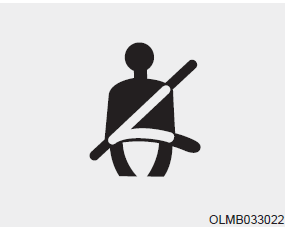Hyundai Ioniq: Tires and wheels / Check Tire Inflation Pressure
Check your tires, including the spare tire, once a month or more.
How to check
Use a good quality tire pressure gauge to check tire pressure. You can not tell if your tires are properly inflated simply by looking at them. Radial tires may look properly inflated when they are under-inflated.
Remove the valve cap from the tire valve stem. Press the tire gauge firmly onto the valve to get a pressure measurement. If the cold tire inflation pressure matches the recommended pressure on the tire label located on the driver's side center pillar or in this manual. No further adjustment is necessary. If the pressure is low, add air until you reach the recommended pressure. Make sure to put the valve caps back on the valve stems. Without the valve cap, dirt or moisture could get into the valve core and cause air leakage. If a valve cap is missing, install a new one as soon as possible.
If you overfill the tire, release air by pushing on the metal stem in the center of the tire valve. Recheck the tire pressure with the tire gauge. Be sure to put the valve caps back on the valve stems. Without the valve cap, dirt or moisture could get into the valve core and cause air leakage. If a valve cap is missing, install a new one as soon as possible.
A cold tire means the vehicle has been sitting for 3 hours and driven for less than 1 mile (1.6 km) in that 3 hour period.
Allow the tire to cool before measuring the inflation pressure. Always be sure the tire is cold before inflating to the recommended pressure.
 Recommended Cold Tire Inflation Pressures
Recommended Cold Tire Inflation Pressures
All tire pressures (including the spare) should be checked when the tires are
cold. "Cold tires" means the vehicle has not been driven for at least three hours
or has been driven less than one mile (1...
 Tire Rotation
Tire Rotation
To equalize tread wear, HYUNDAI recommends that the tires be rotated every 7,500
miles (12,000 km) or sooner if irregular wear develops.
During rotation, check the tires for correct balance...
Other information:
Hyundai Ioniq (AE) 2017-2025 Service Manual: Crankshaft Damper Pulley. Repair procedures
Removal and Installation1.Remove the passenger seat RH front tire.(Refer to Suspension System - "Wheel")2. Remove the engine room under cover.(Refer to Engine and Transaxle Assembly - "Engine Room Under Cover")3.Remove the drive belt(Refer to Timing System - "Drive Belt")4...
Hyundai Ioniq (AE) 2017-2025 Service Manual: Front Seat Belt Pretensioner. Components and components location
C..
Categories
- Manuals Home
- 1st Generation Ioniq Owners Manual
- 1st Generation Ioniq Service Manual
- If the 12 Volt Battery is Discharged (Hybrid Vehicle)
- High Beam Assist (HBA)
- Jump Starting
- New on site
- Most important about car
Seat Belt Warning Light
Seat belt warning light

As a reminder to the driver, the seat belt warning light will illuminate and warning chime will sound for approximately 6 seconds each time you place the Engine Start/Stop button to the ON position if the seat belt is unfastened.
